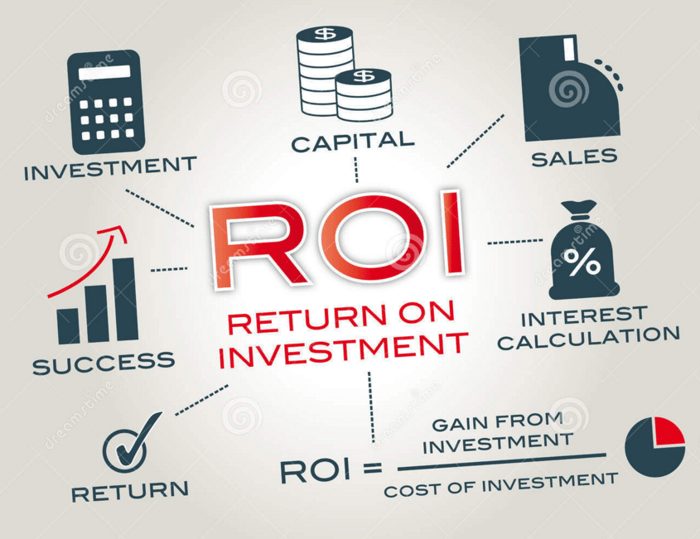
ROI Goal #1: Brand Awareness
Are you reaching your full audience potential? Is your brand awareness increasing across the web? You need to be curating content in the form of relevant and informative blog posts, authoritative articles, online quizzes, etc. in order to move the dial here. And how will you be sure when that dial is moved? Your analytics will do the talking:
- Look for overall traffic growth to your website: sessions, pageviews, and unique visitors should all increase if your brand awareness has increased;
- Time spent on site and pages per session will also increase, which means that more relevant (targeted) visitors are coming to your site, as a direct result of them viewing your content and wanting to know more about your business;
- Bounce rate will decrease as people will be coming to your site on purpose, and won’t immediately click away if you’ve enticed them to want to learn more about you.
ROI Goal #2: Customer Engagement
How loyal are your customers? Do they actively follow you, share or comment on your content? Do they look to you as a thought leader in your industry or in comparison to your competitors? You’ll make the biggest impact on this goal with an active social media presence and by providing content that encourages engagement, such as webinars, social or training events, and regularly recurring newsletters. Customer loyalty and engagement is easiest to measure via your social media tools by looking at the following stats:
- The month over month change in your social media followers; as your presence improves, so should your followers and pages likes and interactions;
- What is your rate of Social media shares per post or per platform? You should see a positive climb each month or for each type of post you generate;
- Google Analytics should also show an increase in your percent of returning visitors, which means that people keep coming back to your site for more of your great content!
ROI Goal #3: Leads
As discussed in our landing page conversions post earlier this month, getting visitors to your site is half the battle; the other half is turning those visits into leads. Are your offers, case study downloads, webinar registrations and demo requests converting your website visitors into actual leads? Here are a few meaningful ways you can track your lead conversion ROI:
- Overall increase in number of leads coming in: this could be through a form submission for an offer download, by someone requesting more information, or visits to your “contact us” page from your webinars or YouTube videos;
- Increase in the quality of leads generated, which shows that your content is correctly targeting your target audience, rather than irrelevant leads who will never actually purchase from you;
- Click-thru Rate: The CTR is the measure of how many targeted audiences clicked on the links on your lead generation channel in comparison to the number of recipients of that particular campaign. A low CTR will tell you that you’re marketing the wrong type of content to a particular segmented audience (like sending an offer for fishing equipment to customers who previously expressed interest in shoes), and a high CTR will indicate that your outreach campaign was bang-on (like Amazon.com showing you “Customers who purchased [what product you’re looking at] also purchased…XYZ”)

ROI Goal #4: Conversions
After you’ve closed your visits into leads, the next obvious step is to move those leads into converted buyers…and ideally, recurring converted buyers, who will continue to return to you for ongoing product or service purchases. You can target this goal by offering coupon codes or discounts to first time buyers, providing online tutorials or training videos for your products, rolling out product updates or upgrades, and by monitoring your customer’s behavior – again using Amazon.com as an example, targeting your customers with a list of “You Might Like…” products the next time they visit your site (based on what they purchased last time). Success in this category can be measured by:
- Number of one-time customers that become recurring customers;
- Success CTR of follow-up offers (like the Amazon.com example listed above);
- Number of leads that convert into actual buying customers
ROI Goal #5: Monetary Value
Ultimately, the most important end goal of your content marketing campaigns is to increase your company’s sales and revenue. This is likely the goal your CEO will look forward to the most, to measure the overall ROI of your strategy to the bottom line. To measure the overall revenue changes since the launch of your content marketing campaign, gather the following information:
- Number of deals closed since the launch of your campaign (in comparison to prior periods);
- Dollar value of deals closed since the launch of your campaign (in comparison to prior periods);
- Long-term dollar value of potential recurring revenue from recurring customers

Content creation can be fun, and it’s easy to forget about the metrics that need to make up the framework of your campaign. You can only report on the value of your strategy’s ROI if you have the data to prove it, so make sure you’ve set up analytics accounts and tracking spreadsheets to document it all from beginning to end.
For more information on what other Key Performance Indicators (KPIs) you should be looking at implementing for your business, check out our free guide on which KPIs you should be measuring for your success.


